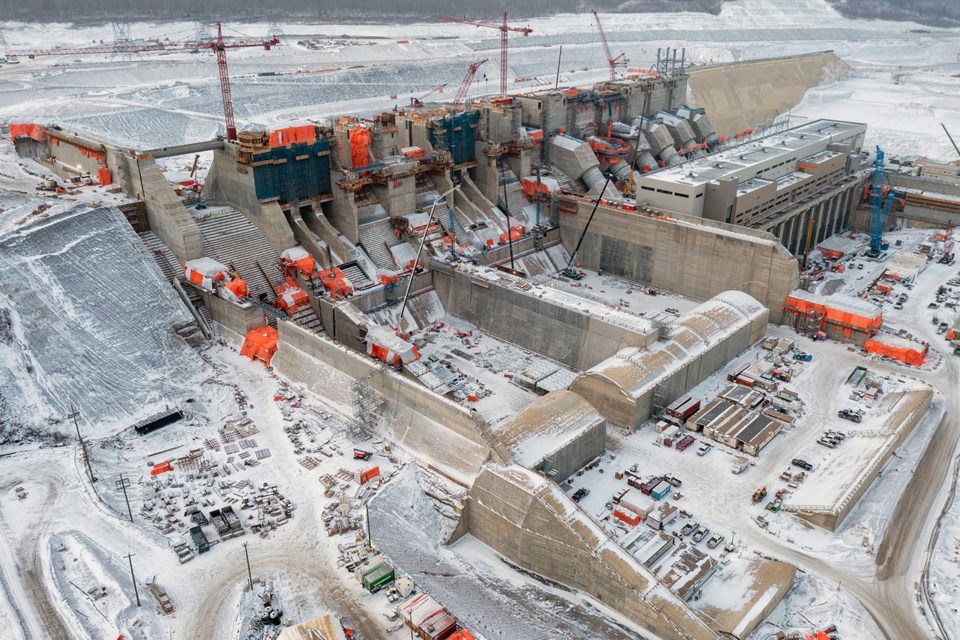It was a year of record-high of employment at the Site C dam construction site outside Fort St. John in 2022.
And BC Hydro says the earth fill dam crossing the Peace River is now 87% complete, saying progress last year "puts us in a good position to complete the remaining work on the dam” in 2023.
The $16-billion project saw four record employment peaks throughout the summer and fall, first in June with 5,209 workers and up to a record 5,554 workers in October, according to figures from BC Hydro.
There were 5,238 workers reported in November, the latest available data from the Crown utility released this week.
BC Hydro spokesman Bob Gammer says there was also a new peak set for women employed on the project at 589 in September, a record that was broken with 621 in October.
In the latest filing to the BC Utilities Commission, president and CEO Chris O’Riley says overall construction on the project is now more than 70% completed, with the earth fill dam now standing at an elevation of 445 metres.
“This past year was the busiest construction season yet on Site C and work continues to advance in all areas – with some parts of the project already completed or nearing completion,” O’Riley wrote in the Dec. 20 filing.
Close to 90% of concrete has been poured for the dam's powerhouse, where the first generating unit is being installed. The penstocks, spillways, and approach channel “remain on track for completion in 2023,” according to O’Riley.
And along Highway 29, realignments were 90% complete as of the fall and expected to be finished this year. New bridges at Farrell Creek, Lynx Creek, Cache Creek, and Dry Creek have all been opened. A new bridge crossing the Halfway River will open later this year.
The next important project milestone is filling the reservoir, which O'Riley says "could occur one year early in 2023."
“We are on track to complete the project in 2025, which includes a schedule for achieving first power in 2024,” O'Riley said, adding, "In the event reservoir filling occurs in 2023, the project would potentially be able to deliver first power as early as 2023."
Ground first broke on the dam in fall 2015, and employment first surpassed the 5,000-mark in October 2020 when 5,181 workers were reported.
The project workforce has surpassed that mark several times since:
- June 2021 - 5,046 workers
- July 2021 - 5,108 workers
- August 2021 - 5,087 workers
- May 2022 - 5,060 workers
- June 2022 - 5,209 workers
- July 2022 - 5,414 workers
- August 2022 - 5,396 workers
- September 2022 - 5,420 workers
- October 2022 - 5,554 workers
Of the November workforce, 19% of workers were local, with 1,015 Peace region residents employed by construction and non-construction contractors.
There were 3,552 B.C. residents, or 68% of the total workforce, working for construction and non-construction contractors, and in engineering and project team jobs, according to BC Hydro.
BC Hydro reported 185 apprentices as well as 386 indigenous workers and 558 women working on the project in November.
There were no temporary foreign workers employed in a specialized position, according to provided figures, and 43 managers and other professionals working under the federal international mobility program.
BC Hydro says not all workers were on site or in camp at one time. Monthly numbers include those working off the dam site area, working from home, and others who may have been on site at any one time in August, and who may have been on days off for other periods of time.
BC Hydro - Site C Quarterly Report (F2023 Q2) by AlaskaHighwayNews on Scribd



